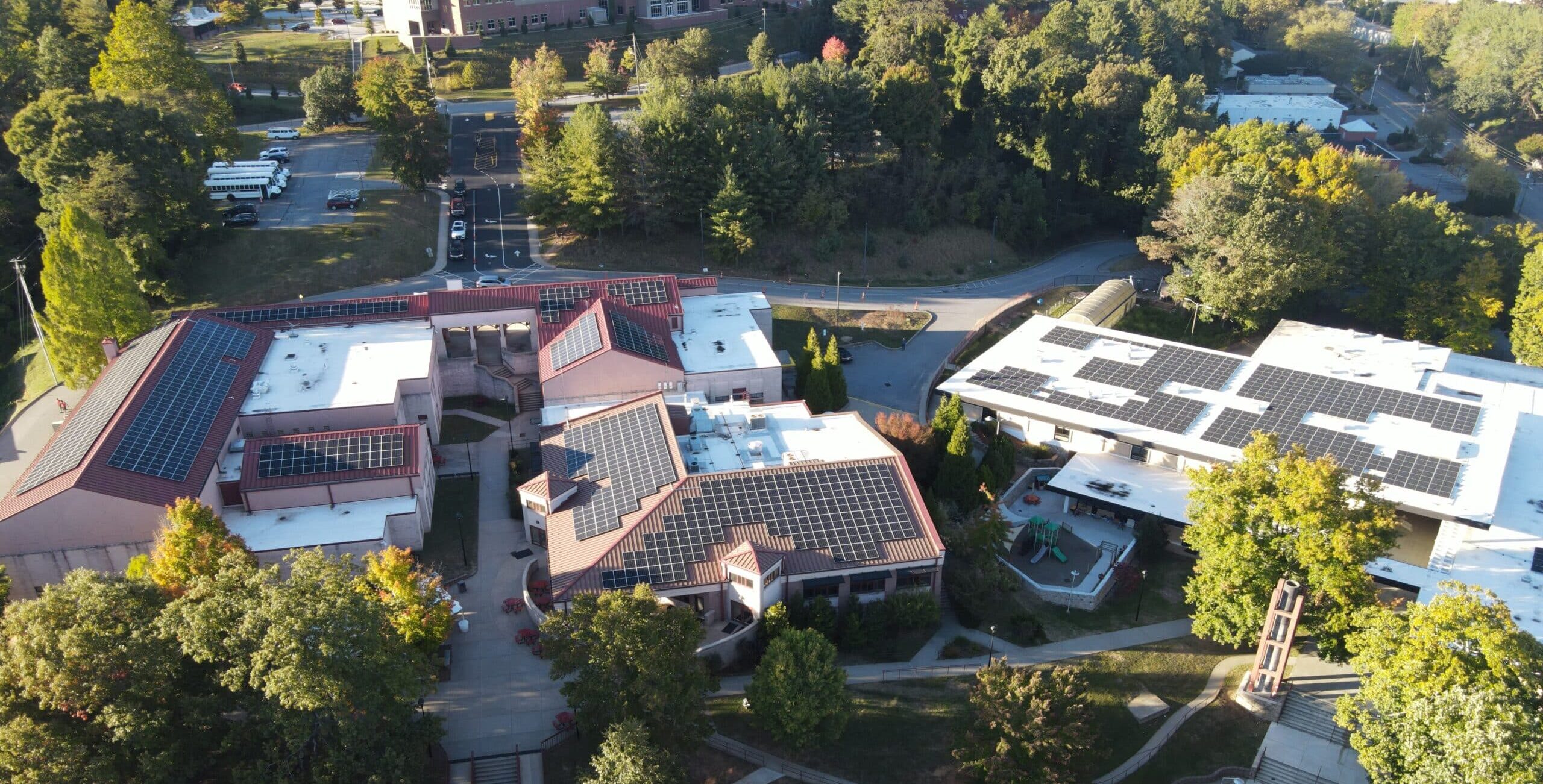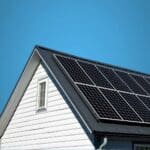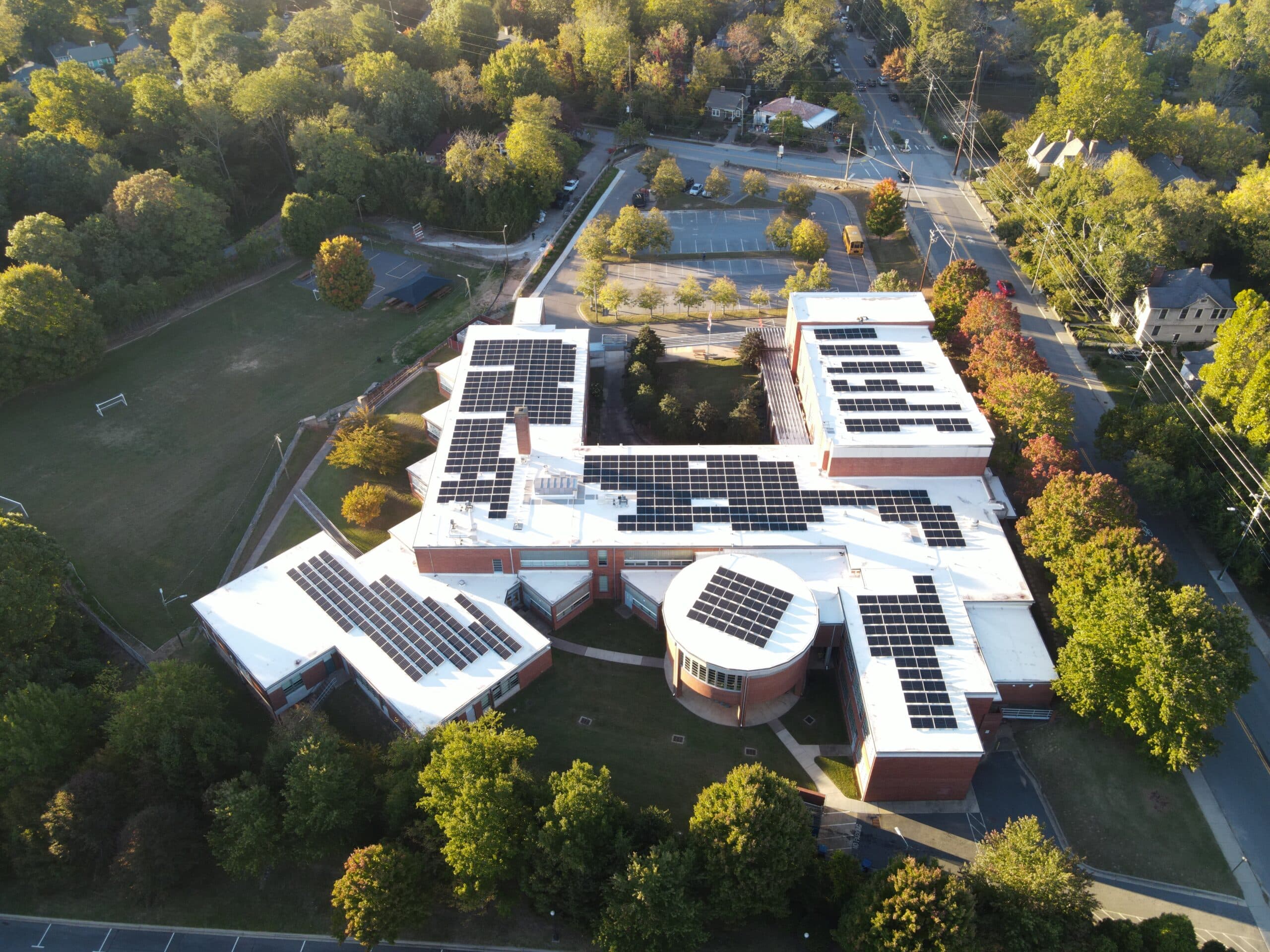- Montford North Star Academy | Asheville, North Carolina | Credit: Pisgah Energy
Blazing a Path to 100% Clean Energy by 2042 in Buncombe County
By 2042, the western North Carolina community of Buncombe County expects to be powered by 100% renewable energy – a first for the Tar Heel state. Currently, 11 out of 45 K-12 schools in Buncombe County Schools have solar arrays that are powering 70% of the schools’ energy needs. Buncombe County is in the process of installing solar arrays at 47 more publicly-owned buildings. Altogether, the county will soon have seven megawatts of rooftop solar capacity.
“In 2018, our commissioners set this big, broad, ambitious goal to get to 100% renewable energy for the entire county by 2042,” said Jeremiah LeRoy, Sustainability Officer for Buncombe County, NC. “We have this vision that feels impossible, but once we start looking at all of our public facilities, we quickly realized that the county owns a lot of square footage that’s prime for solar. Starting with schools just made economic sense.”
Buncombe County Schools Stats
Location: Asheville, NC
School District: Serves 22,091 students at 45 schools
Solar Installation: 3.14 MW at 11 schools
Energy Offset: Combined 70% offset of energy use of the schools with solar installed
Cost Savings: $13 Million over 30 years
Financing: Direct Ownership via tax-exempt bonds
Buncombe County’s unique approach began with the Board of County Commissioners.. The county recognized that powering their school buildings with solar energy would save money that could be re-invested in other improvement projects, contribute to the county’s growing energy independence, and support local good-paying jobs.
“I love working for a school system that demonstrates its commitment to future generations, and I love that they are putting resources towards taking action,” said Chris Jamison, 8th Grade Social Studies teacher, Buncombe County Schools. “As a teacher, I believe that we must focus on sustainability in all aspects of our lives, and I’m proud to drive my electric vehicle to a school that is powered by solar.”

Asheville High School | Asheville, North Carolina | Credit: Pisgah Energy
In 2020, nearly 50 buildings in the county were slated to receive solar rooftop installations, at a total cost of $10.5 million. Recently, Buncombe County Commissioners approved 10 more solar projects, which includes putting solar on all county fire departments. In order to maximize energy bill savings, the County plans to purchase and own the solar arrays and finance the projects through county debt issuance. Thanks to the Inflation Reduction Act, the County will be eligible to receive tax credits that lower the cost of installation for any solar projects installed in 2023 or later, .
“Optics matter with these projects,” said LeRoy. “I want people to drive around downtown Asheville and see these solar projects that their taxes have paid for.”
“I want people to drive around downtown Asheville and see these solar projects that their taxes have paid for.”
– Jeremiah Leroy, Sustainability Officer, Buncombe County, NC
While many U.S. cities still lack funding to hire sustainability directors and staff, having a cohort of others in the field makes a big difference in designing clean energy projects that commissioners want to see and communities deserve. LeRoy is among a small, but growing cohort of the Southeast Sustainability Directors Network (SSDN) working to pursue clean energy projects in cities and counties in Alabama, Arkansas, Florida, Georgia, Louisiana, Mississippi, North Carolina, South Carolina, Tennessee, and Virginia.
“I lean on SSDN quite a bit for advice on how to approach new projects,” said LeRoy. “To reach out for advice from others in the South who have done this is priceless. I also get a ton of requests about how we did it here in Buncombe and through SSDN I’ve seen real momentum to take on new sustainability projects in Charlotte, Durham, and others.”
“I’m proud knowing that what we did here in Buncombe was a catalyst and model for other people to start adopting solar. We want to be copied in other communities. It’s been such an amazing opportunity to share the successes that we have had. Hopefully we can take these lessons learned, share them with people, and then they can have a much smoother process for what they’re trying to accomplish,” said Jeremiah Leroy.
“I’m proud knowing that what we did here in Buncombe was a catalyst and model for other people to start adopting solar. We want to be copied in other communities. It’s been such an amazing opportunity to share the successes that we have had. Hopefully we can take these lessons learned, share them with people, and then they can have a much smoother process for what they’re trying to accomplish.”
– Jeremiah Leroy, Sustainability Officer, Buncombe County, NC















